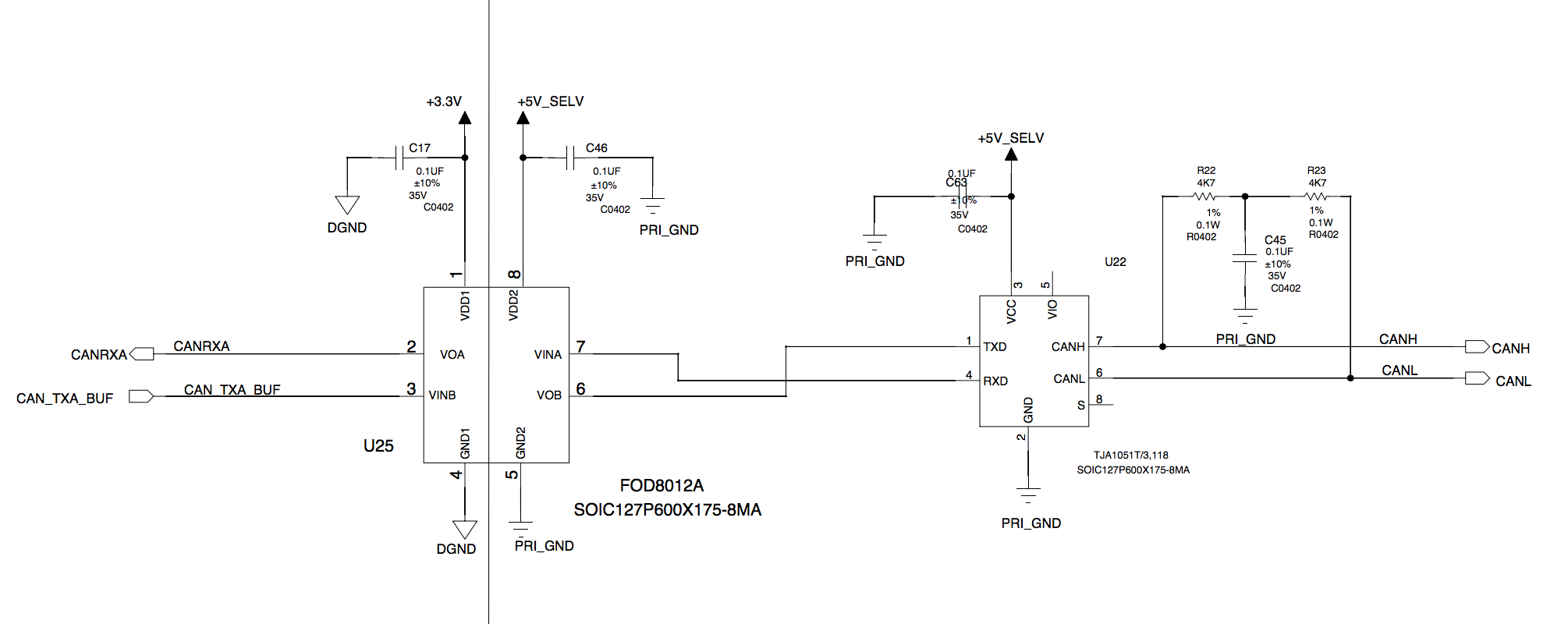Other Parts Discussed in Thread: TMS320F28031,
Tool/software: Code Composer Studio
Hello,
Our existing product has a TMS320f28031 with a TJA1050T CAN transceiver(shown in the first schematic snippet) which works perfectly fine. We have upgraded the same to a TMS320f28035 with a TJA1051T/3 CAN transceiver as shown in the second schematic snippet with the opto isolator. While testing this new design, I am having challenges to get the CAN up and running since the ECanaRegs.CANTRS.bit.TRS31 flag never goes to a low state stopping the transmission, and also no reception.
I tried the same code with the target configuration and memory map changed to abide to our old design, and that code gets the CAN functional. (I can transmit and receive to and from another controller) .
Note that although the 28035 has more pins, the GPIOs for CAN TX and RX are the same, thus ideally I see no need for a change in the initialization of the CAN module.
Am I missing out on something in the code because of the 28031-28035 change here? Or does the new design portion on the schematic seem to be at fault here?


